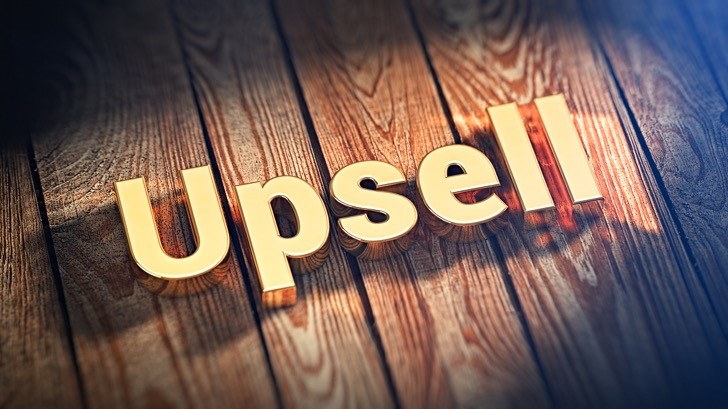
Wash your hands and start using it to make your customers happy.
Cue the eye-roll. You’ve clicked on the button to purchase a product or service. It’s never that easy. First, they’re going to try to upsell you. As long as you’ve got our pocketbook open, they might as well see how much more money they can make you part with.
Cue the violins if you share this belief about upselling. The process – when applied correctly – is anything but sleazy. In fact, it’s a powerful way to deepen customer satisfaction as you help them by uncovering an unfulfilled need.
What upselling is…and isn’t
If you use it – or have suffered from its use – incorrectly, it’s because you see it as a tactic. In that case, upselling is used to describe the process of trying to sell people things they don’t need. In this case, it’s usually a more expensive version or an add-on. There’s a relationship between the upsell and the product they’ve already agreed to purchase. The only benefit is to you.
When you instead approach upselling as a strategy that provides value beyond the additional price, you’re using it as a strategy. The next step up costs an additional $50, but it offers an extended warranty that covers a particular kind of uncovered damage that will cost at least $300 to have repaired.
Wow, thank you!
As a strategic effort, you receive more revenue from a customer – and that’s a good thing. The customer also benefits by investing in a potential savings scenario. They also discover that you have displayed a genuine concern for them. You took the time to educate them about an unexpected purchase that offers better value.
The additional revenue for you is nice. The deeper loyalty from this customer is even better. Is loyalty a nebulous concept to you? Here’s some perspective. The White House Office of Consumer Affairs reports that on average, a loyal customer is worth up to 10 times as much as their first purchase. Upselling as an education process is an act of customer service. An American Express survey showed that 70% of Americans say they’re willing to spend more with companies they believe provide excellent customer service.
It’s not always about more money
Upselling doesn’t have to ring the profit margin bell. In many cases, the price of an upsell product is heavily discounted. The lower price is a psychological aid in upselling. The buyer didn’t intend to make this purchase, but they’ll appreciate both the discount as well as the education on its advantage.
Just as important is the fact that you have made an additional interaction. The more opportunities you have to sell – which is a process of education about your product or service – the deeper and more valuable you make the relationship.
Odds in your favor
According to research by the authors of the best-selling book Marketing Metrics: The Definitive Guide to Measuring Marketing Performance, the probability of selling to a new prospect is between 5% and 20%. The probability of selling to an existing customer is 60% to 70%.
That’s the advantage an existing relationship gives you. The strategy of upselling as an education about your product or service introduces additional value for the customer, and incremental revenue for you.
The best way to upsell
We live in a self-service world. “Thanks, I’d rather do it myself,” is our mantra. Search engines and social media have trained us to take education into our own hands, as well. Our customers and prospects prefer to consume content rather than marketing messages.
This content helps to put your company and the benefit of using your product or service into their worldview. They appreciate reading content that validates their decision that you have the best solution for their problem. Your content is education, and it will ultimately complement the education that becomes a part of your successful upsell.
Upselling has to mutually beneficial if it’s going to be successful. It must create an advantage for your customer, as well as yourself. Upsells are almost always unplanned purchases. It becomes advantageous when your customers discover they’re about to get more value than they bargained for. You’re setting yourself up for more than just additional revenue. You’re deepening customer satisfaction and creating customer loyalty.
It paves the way for a repeat sale. Those are even better than an upsell.
Whether you’re looking to attract new customers or deepen the relationship with existing ones, ContentBacon can help. We provide custom content development and marketing strategies to educate your customers, build your audience, and bring more sales.
